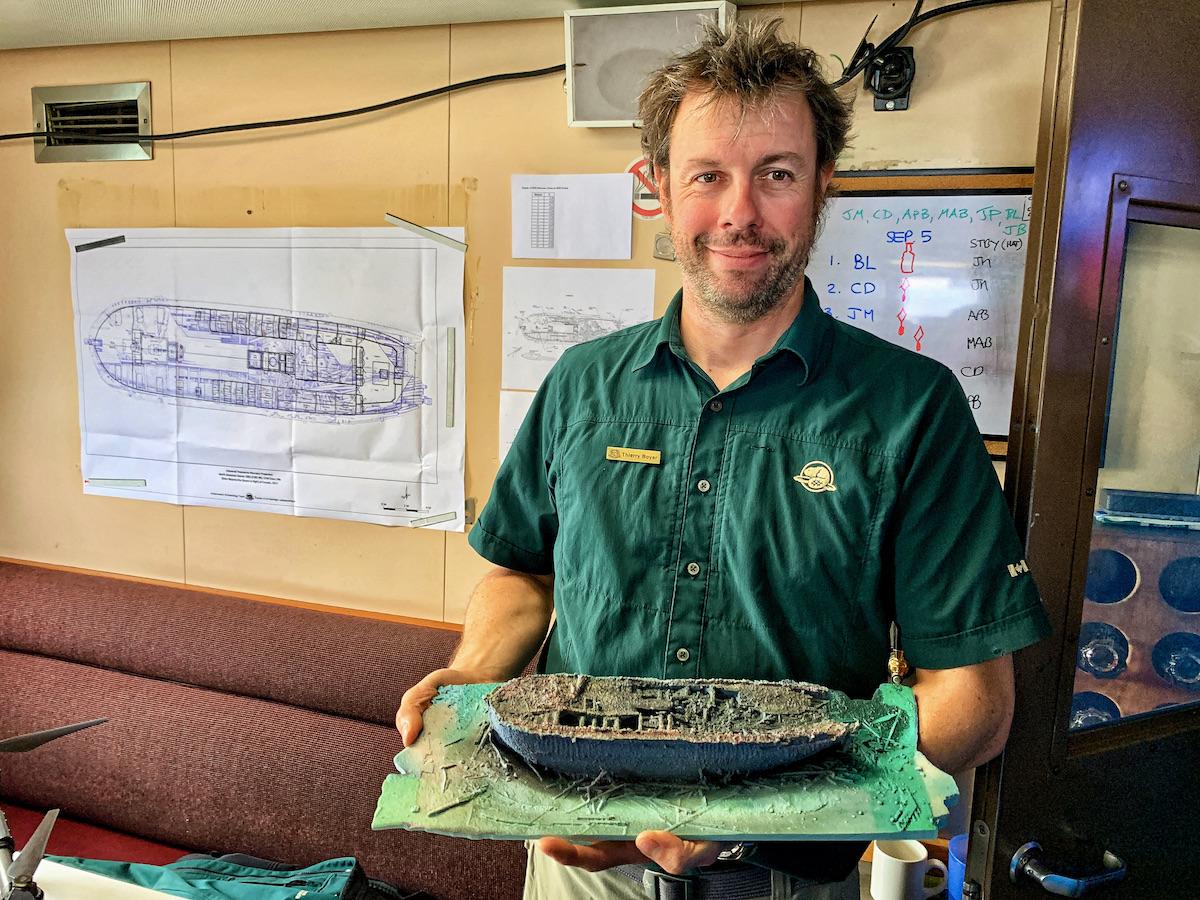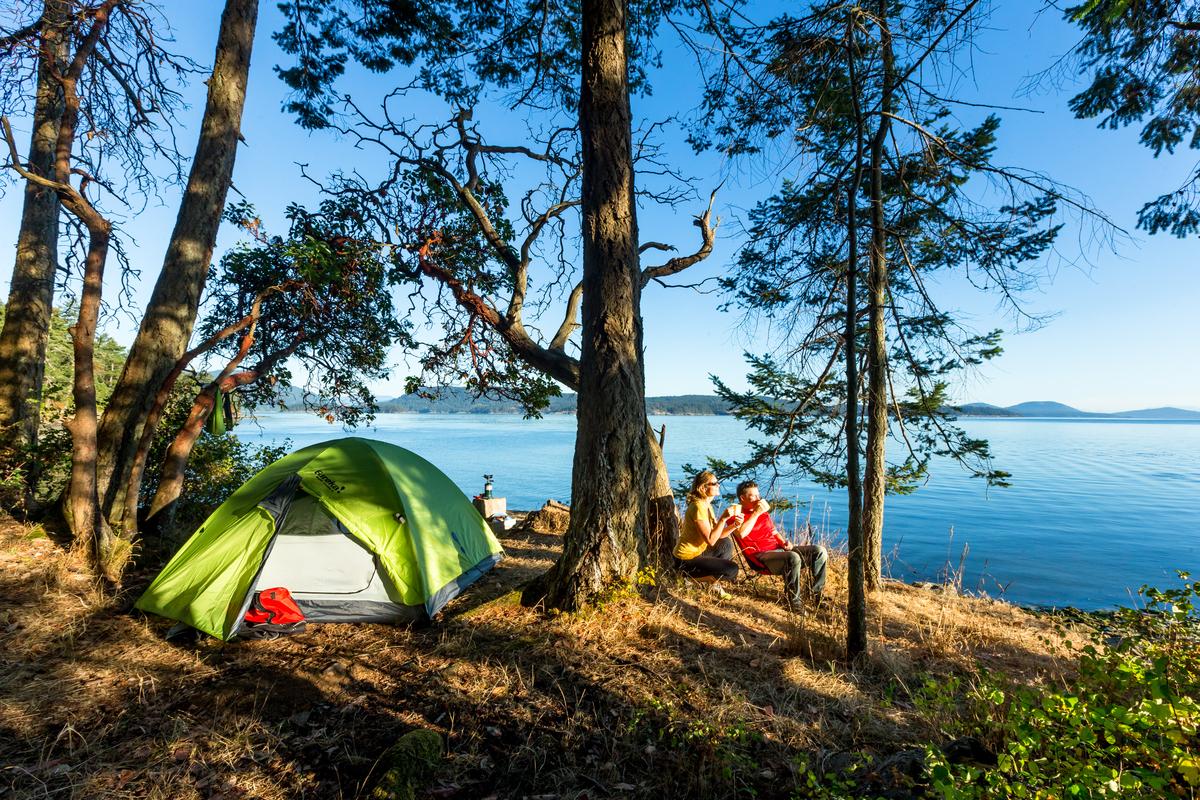
Parks Canada underwater archaeologist Thierry Boyer shows a model of HMS Erebus in 2019 while aboard the RV David Thompson diving to the wreck site/Jennifer Bain
The Canadian government has proposed $15 million over three years to accelerate archaeological and conservation work for the wrecks of HMS Erebus and HMS Terror from the legendary and ill-fated Franklin Expedition of 1845.
The proposed investment — about $12 million USD — was announced Monday as part of Deputy Prime Minister and Finance Minister Chrystia Freeland’s 2021 budget and would start flowing for the 2021-2022 fiscal year.
The wrecks were discovered in 2014 and 2016 respectively near Gjoa Haven, Nunavut. They are co-managed by Parks Canada and Inuit as Wrecks of HMS Erebus and HMS Terror National Historic Site.
“They are some of the best-preserved wooden wrecks in the world,” the budget announced. “They contain clues that can help us unravel one of the world’s greatest maritime mysteries. But reduced ice cover and increased sea swells caused by climate change are accelerating the deterioration of the HMS Erebus. To conserve and protect these historical treasures.”
Franklin set sail from England in 1845 with two ships, HMS Erebus and HMS Terror, in search of a Northwest Passage across what is now Canada's Arctic. The ships and crew were last seen by Inuit on King William Island. Their apparent disappearance, prompted 170 years of searches. In September 2014, an expedition led by Parks Canada discovered the wreck of HMS Erebus in an area that had been identified by Inuit. Two years later the wreck of HMS Terror was located.

Parks Canada's Marc-André Bernier aboard the RV David Thompson in 2019 while underwater archaeologists dive to the HMS Erebus/Jennifer Bain
Freeland tabled her first budget Monday for Prime Minister Justin Trudeau’s minority Liberal government. It proposes $101.4 billion ($80.4 billion USD) in new spending over the next five fiscal years.
“This budget is about finishing the fight against Covid-19,” said Freeland. “It’s about healing the wounds left by the COVID-19 recession. And it’s about creating more jobs and prosperity for Canadians in the days — and decades — to come.”
The budget proposed funding for Parks Canada to continue to replace future lost visitor revenues due to closures and restrictions at national parks, national marine conservation areas and national historic sites as a result of Covid restrictions.
Budget 2021 — titled “A Recovery Plan for Jobs, Growth, and Resilience” — noted that Canada plans to reaches its goal of conserving 25 per cent of lands and oceans by 2025, and create green economy jobs along the way.
Canada is home to a quarter of the Earth’s wetlands and boreal forests, 20 per cent of its fresh water, the longest coastline in the world and a fifth of the world’s remaining wilderness. It stewards important habitats for birds, fish and animals. But many natural spaces and species are under threat from human activity and climate change.

Parks Canada has been promised federal money to offset losses from closures and a drop of visitors during Covid-19/Parks Canada
“Action is needed to conserve nature, address biodiversity loss, and protect our species at risk,” the budget stated. “Protected nature is also a critical part of Canada’s plan to fight climate change. Healthy forests and oceans can absorb and store carbon. We must also take action to address plastic pollution in our water.”
On this front, the Liberals committed to spending $2.3 billion ($1.8 billion USD) over five years to Environment and Climate Change Canada, Parks Canada and the Department of Fisheries and Oceans.
This investment would:
• Conserve up to 1 million square kilometers more land and inland waters to achieve Canada’s 25 per cent protected area by 2025 target, including through national wildlife areas and Indigenous Protected and Conserved Areas.
• Create thousands of jobs in nature conservation and management.
• Accelerate new provincial and territorial protected areas.
• Support Indigenous Guardians.
• Take action to prevent priority species at imminent risk of disappearing, including through partnerships with Indigenous peoples.
The Liberals said that, taken together with funding provided for the Nature Legacy Initiative announced in its last budget in 2018, this represents the largest investment in nature conservation in Canada’s history.

 Support Essential Coverage of Essential Places
Support Essential Coverage of Essential Places



